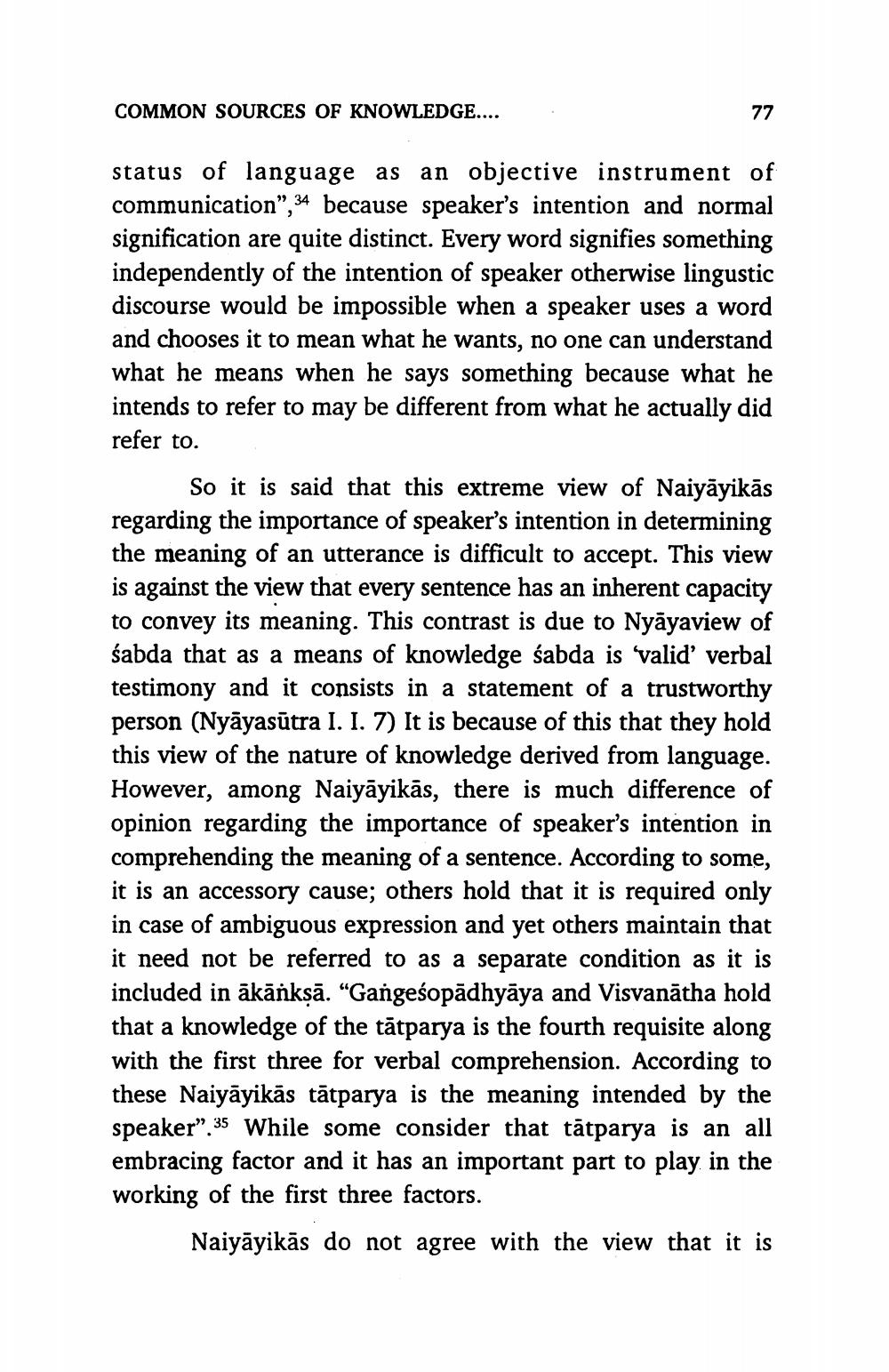________________
COMMON SOURCES OF KNOWLEDGE....
77
status of language as an objective instrument of communication”, 34 because speaker's intention and normal signification are quite distinct. Every word signifies something independently of the intention of speaker otherwise lingustic discourse would be impossible when a speaker uses a word and chooses it to mean what he wants, no one can understand what he means when he says something because what he intends to refer to may be different from what he actually did refer to.
So it is said that this extreme view of Naiyāyikās regarding the importance of speaker's intention in determining the meaning of an utterance is difficult to accept. This view is against the view that every sentence has an inherent capacity to convey its meaning. This contrast is due to Nyāyaview of śabda that as a means of knowledge sabda is valid' verbal testimony and it consists in a statement of a trustworthy person (Nyāyasūtra I. I. 7) It is because of this that they hold this view of the nature of knowledge derived from language. However, among Naiyāyikās, there is much difference of opinion regarding the importance of speaker's intention in comprehending the meaning of a sentence. According to some, it is an accessory cause; others hold that it is required only in case of ambiguous expression and yet others maintain that it need not be referred to as a separate condition as it is included in ākānkşā. “Gangesopādhyāya and Visvanātha hold that a knowledge of the tātparya is the fourth requisite along with the first three for verbal comprehension. According to these Naiyāyikās tātparya is the meaning intended by the speaker". 35 While some consider that tātparya is an all embracing factor and it has an important part to play in the working of the first three factors.
Naiyāyikās do not agree with the view that it is




